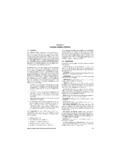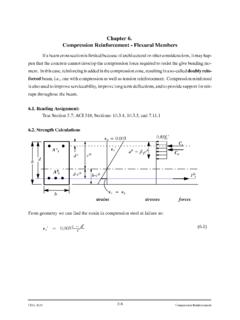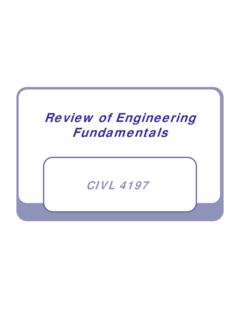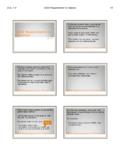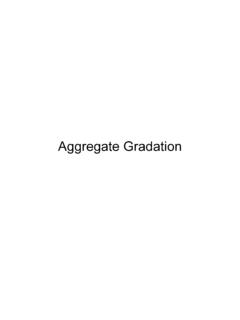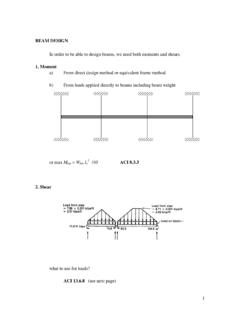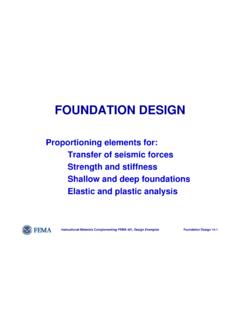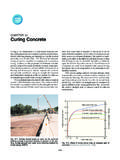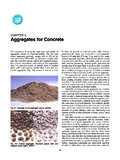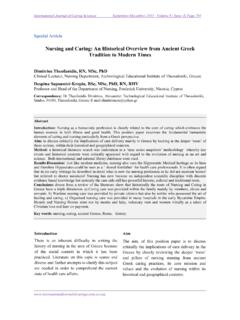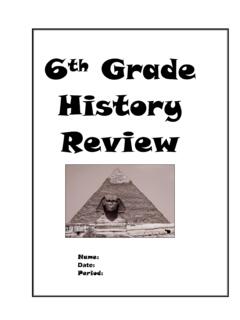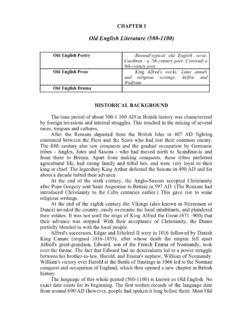Transcription of Surveying - angles and directions - Memphis
1 CIVL 1112 Surveying - Azimuths and Bearings 1/8. angles and directions angles and directions The most common relative directions are left, In planar geometry, an angle is the figure formed right, forward(s), backward(s), up, and down. by two rays, called the sides of the angle, sharing a common endpoint, called the vertex of the angle. z Angle is also used to designate the measure of an x angle or of a rotation. In the case of a geometric angle, the arc is y centered at the vertex and delimited by the sides. angles and directions angles and directions angles and directions angles and directions CIVL 1112 Surveying - Azimuths and Bearings 2/8.
2 angles and directions angles and directions Surveying is the science and art of measuring distances and angles on or near the surface of the earth. Surveying is an orderly process of acquiring data relating to the physical characteristics of the earth and in particular the relative position of points and the magnitude of areas. angles and directions angles and directions Evidence of Surveying and recorded information In Surveying , the direction of a line is described exists from as long ago as five thousand years in by the horizontal angle that it makes with a places such as China, India, Babylon and egypt .
3 Reference line. This reference line is called a meridian The word angle comes from the Latin word angulus, meaning "a corner". angles and directions angles and directions The term "meridian" comes from the Latin A meridian (or line of longitude) is an meridies, meaning "midday . imaginary arc on the Earth's surface from the North Pole to the South Pole that connects The sun crosses a given meridian midway all locations running along it with a given between the times of sunrise and sunset on that longitude meridian. The same Latin term gives rise to the terms The position of a point on (Ante Meridian) and (Post Meridian) used to the meridian is given by disambiguate hours of the day when using the 12- the latitude.
4 Hour clock. CIVL 1112 Surveying - Azimuths and Bearings 3/8. angles and directions angles and directions The meridian that passes In 1721, Great Britain established through Greenwich, England, its own meridian passing through an early transit circle at the newly establishes the meaning of established Royal Observatory at zero degrees of longitude, or Greenwich. the Prime Meridian A prime meridian at the Royal Observatory, Greenwich was established by Sir George Airy in 1851. By 1884, over two-thirds of all ships and tonnage used it as the reference meridian on their charts and maps.
5 angles and directions angles and directions Determining latitude is relatively easy in that it could be Determining longitude at sea was also much harder than on found from the altitude of the sun at noon ( at its highest land. point) with the aid of a table giving the sun's declination for the day, or from many stars at night. A stable surface to work from, a comfortable location to live in while performing the work, and the ability to repeat For longitude, early ocean navigators had to rely on dead determinations over time made various astronomical reckoning. techniques possible on land (such as the observation of eclipses) that were unfortunately impractical at sea.
6 This was inaccurate on long voyages out of sight of land and these voyages sometimes ended in tragedy as a result. Whatever could be discovered from solving the problem at sea would only improve the determination of longitude on land. angles and directions angles and directions In July of 1714, during the reign of Queen Anne, the The longitude problem was eventually solved by a working Longitude Act was passed in response to the Merchants class joiner from Lincolnshire with little formal education. and Seamen petition presented to Westminster Palace in May of 1714.
7 John Harrison (24 March 1693 24 March 1776) was a self-educated English clockmaker. A prize of 20,000 was offered for a method of determining longitude to an accuracy of half a degree of a great circle. He invented the marine chronometer, a Half a degree being sixty nautical miles. This problem was long-sought device in solving the tackled enthusiastically by learned astronomers, who were problem of establishing the East-West held in high regard by their contemporaries. position or longitude of a ship at sea. CIVL 1112 Surveying - Azimuths and Bearings 4/8. angles and directions angles and directions Constructed between 1730 and 1735, H1 is essentially a portable version of Harrison's precision wooden clocks.
8 There are three types of meridians It is spring-driven and only runs for one day. The moving Astronomic- direction determined from the parts are controlled and counterbalanced by springs so shape of the earth and gravity; also called that, unlike a pendulum clock, H1 is independent of the geodetic north direction of gravity. Magnetic - direction taken by a magnetic needle at observer's position Assumed - arbitrary direction taken for convenience H4. H1 H2. angles and directions angles and directions Methods for expressing the magnitude of plane Methods for expressing the magnitude of plane angles are: sexagesimal, centesimal, radians, angles are: sexagesimal, centesimal, radians, and mils and mils Sexagesimal System - The circumference of circles is Sexagesimal System - The circumference of circles is divided into 360 parts (degrees); each degree is further divided into 360 parts (degrees).
9 Each degree is further divided into minutes and seconds divided into minutes and seconds Sexagesimal (base-sixty) is a numeral system with sixty as the base. It originated The number 60, a highly composite number, has twelve factors 1, 2, 3, 4, 5, 6, 10, with the ancient Sumerians in the 2,000s BC, was transmitted to the Babylonians, 12, 15, 20, 30, 60 of which 2, 3, and 5 are prime. With so many factors, many and is still used in modified form nowadays for measuring time, angles , and fractions of sexagesimal numbers are simple. For example, an hour can be divided geographic coordinates.
10 Evenly into segments of 30 minutes, 20 minutes, 15 minutes, etc. Sixty is the smallest number divisible by every number from 1 to 6. angles and directions angles and directions Babylonian mathematics Other historical usages Sexagesimal as used in ancient Mesopotamia was not a pure base 60 system, By the 17th century it became common to denote the integer part of in the sense that it didn't use 60 distinct symbols for its digits. sexagesimal numbers by a superscripted zero, and the various fractional parts by one or more accent marks. John Wallis, in his Mathesis universalis, generalized this notation to include higher multiples of 60; giving as an example the number: 49````,36```,25``,15`,1 ,15',25'',36''',49''''.
